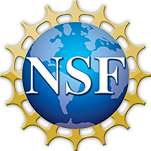Abstract
Although little is known regarding microbial life within our planet’s rock-hosted deep subseafloor biosphere, boreholes drilled through deep ocean sediment and into the underlying basaltic crust provide invaluable windows of access that have been used previously to document the presence of microorganisms within fluids percolating through the deep ocean crust. In this study, the analysis of 1.7 million small subunit ribosomal RNA genes amplified and sequenced from marine sediment, bottom seawater and basalt-hosted deep subseafloor fluids that span multiple years and locations on the Juan de Fuca Ridge flank was used to quantitatively delineate a subseafloor microbiome comprised of distinct bacteria and archaea. Hot, anoxic crustal fluids tapped by newly installed seafloor sampling observatories at boreholes U1362A and U1362B contained abundant bacterial lineages of phylogenetically unique Nitrospirae, Aminicenantes, Calescamantes and Chloroflexi. Although less abundant, the domain Archaea was dominated by unique, uncultivated lineages of marine benthic group E, the Terrestrial Hot Spring Crenarchaeotic Group, the Bathyarchaeota and relatives of cultivated, sulfate-reducing Archaeoglobi. Consistent with recent geochemical measurements and bioenergetic predictions, the potential importance of methane cycling and sulfate reduction were imprinted within the basalt-hosted deep subseafloor crustal fluid microbial community. This unique window of access to the deep ocean subsurface basement reveals a microbial landscape that exhibits previously undetected spatial heterogeneity.

